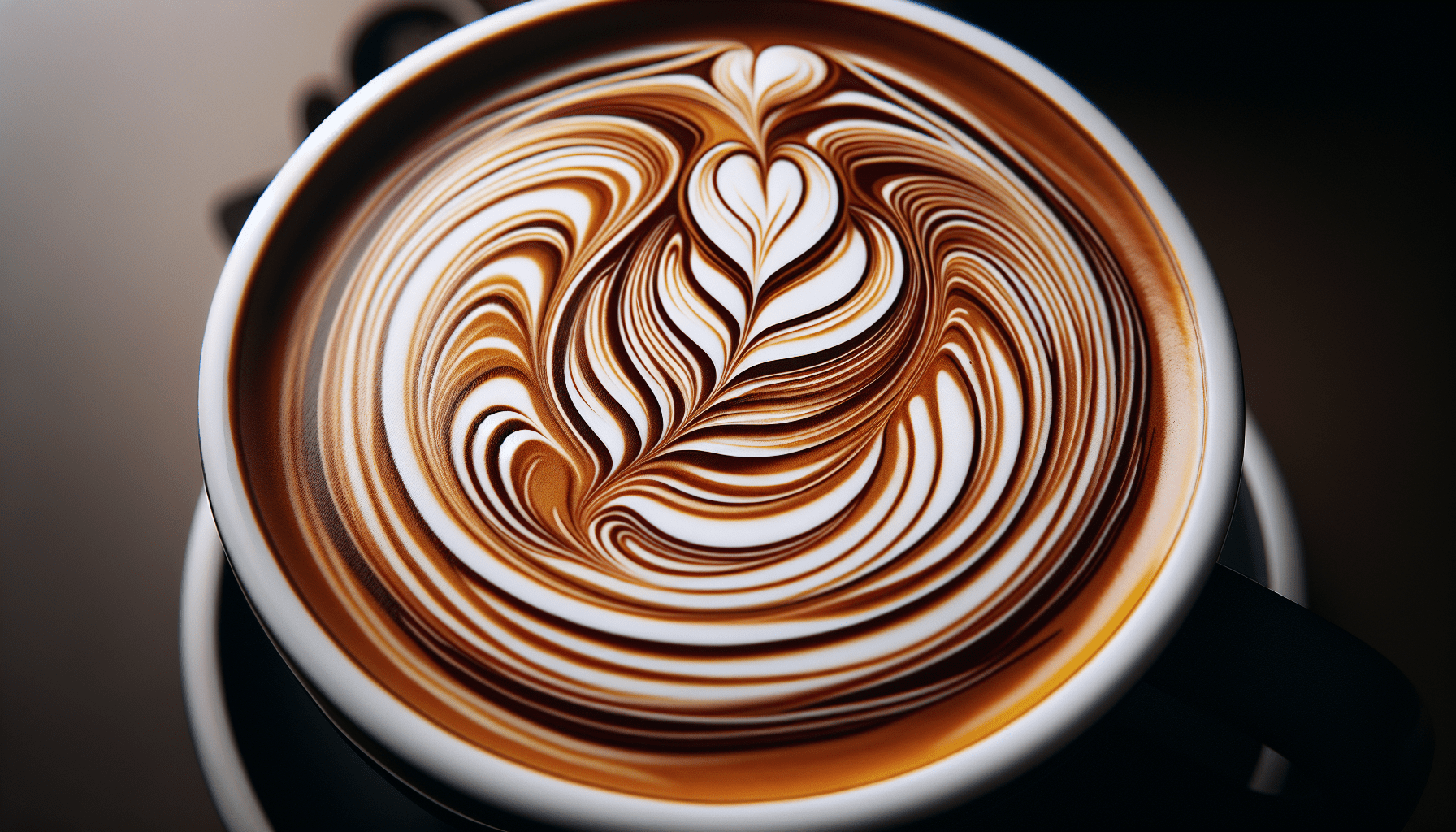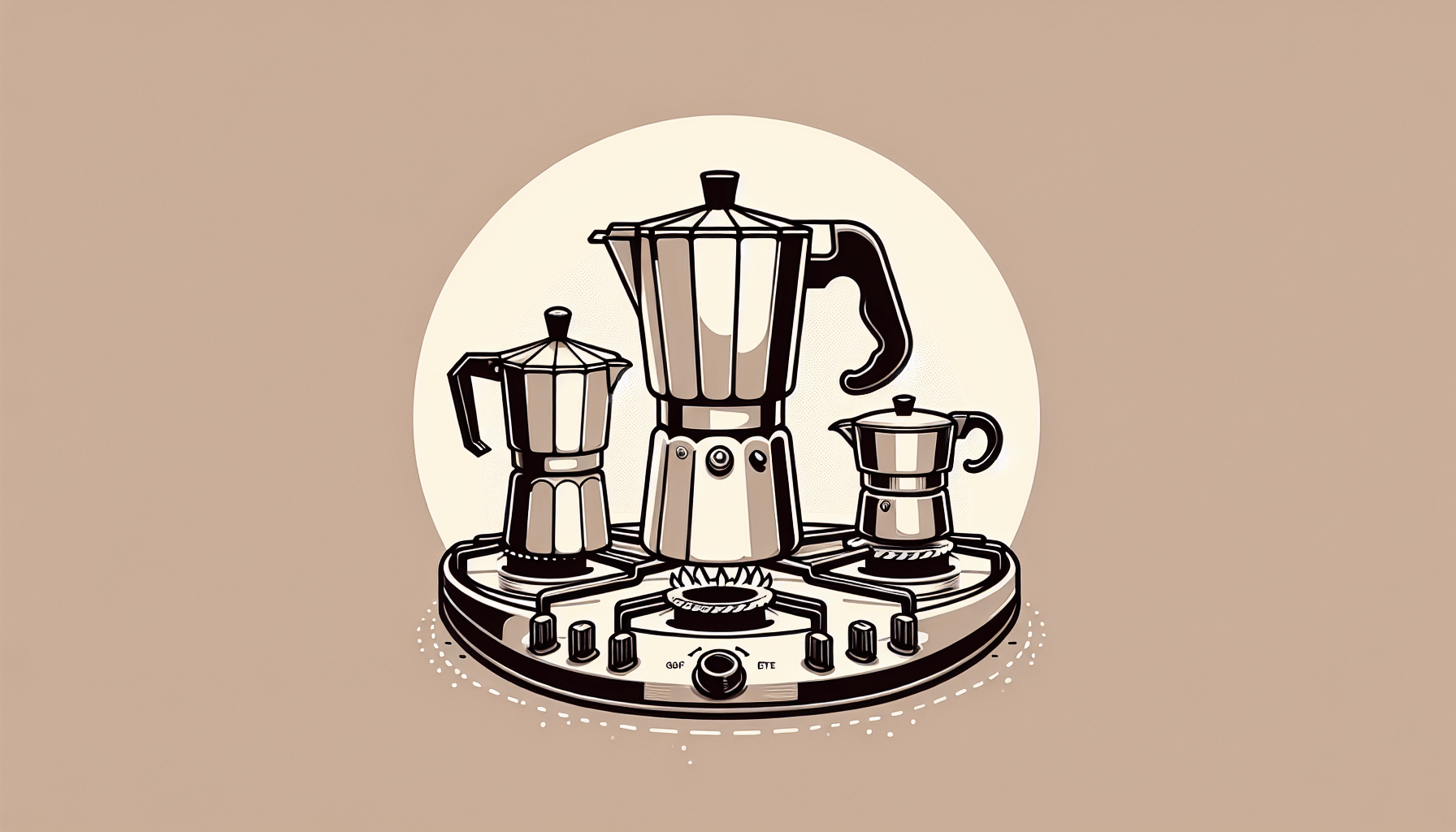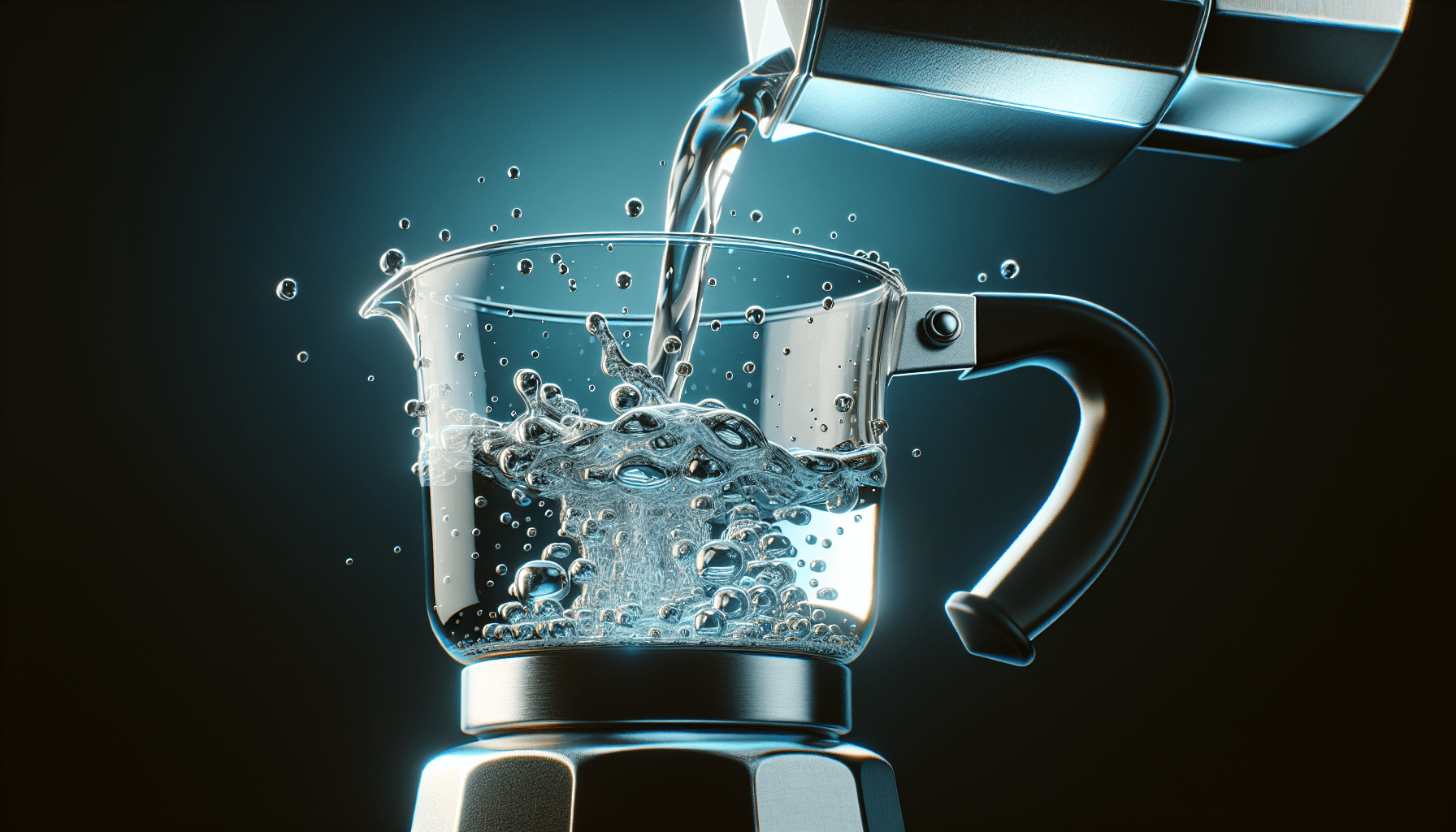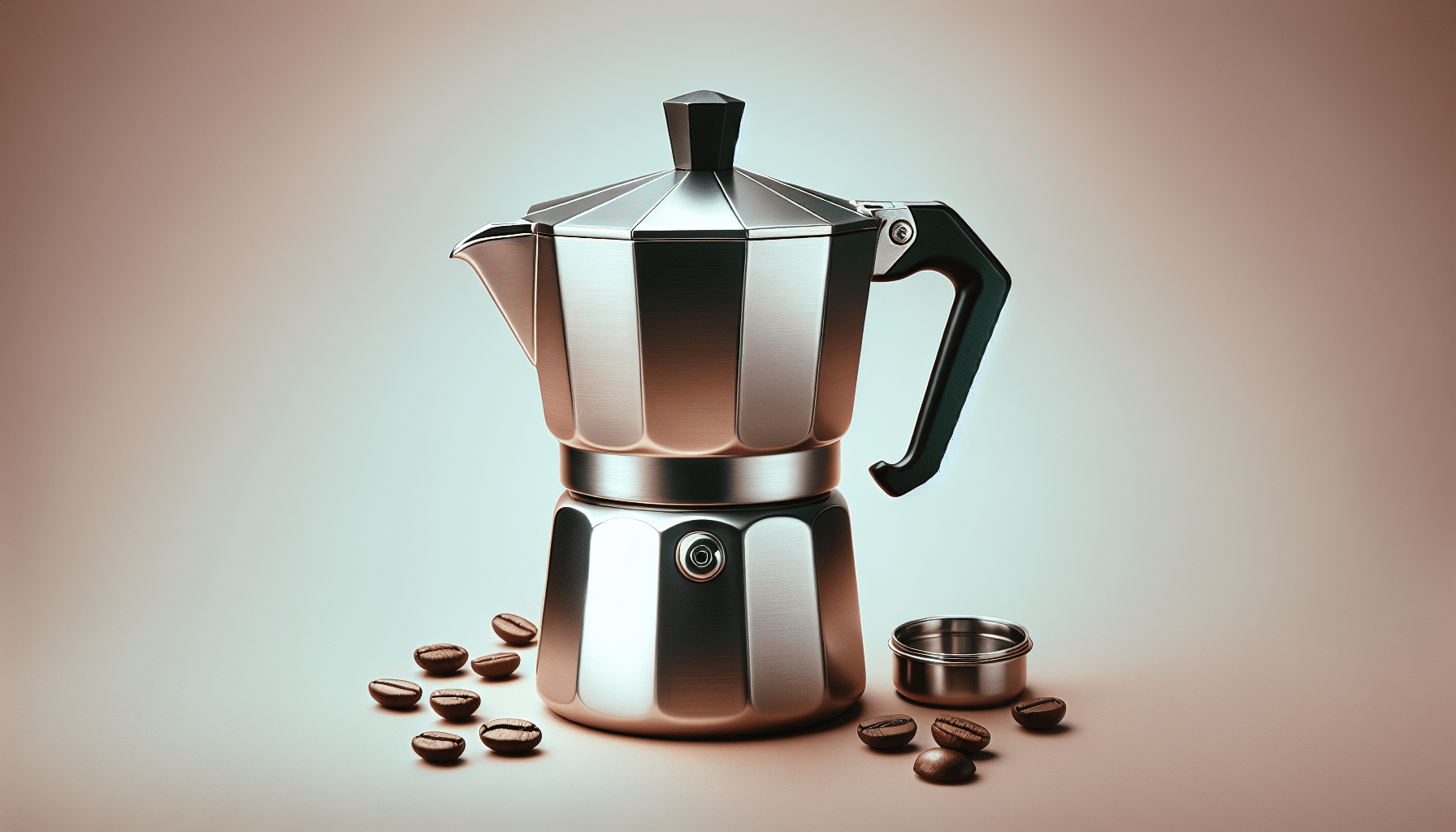If you’re a coffee lover but don’t want to invest in a fancy espresso machine, you may be wondering if a stovetop espresso maker can do the trick when it comes to making lattes or cappuccinos. Well, prepare to be pleasantly surprised! While stovetop espresso makers are primarily designed for brewing an intense shot of espresso, with a little creativity and the right ingredients, you can absolutely enjoy a delicious latte or cappuccino right from the comfort of your own kitchen. So, dust off that stovetop espresso maker and get ready to impress yourself and your guests with some homemade coffee masterpieces!
Understanding Stovetop Espresso Makers
What is a stovetop espresso maker?
A stovetop espresso maker, also known as a moka pot or Italian coffee pot, is a device used to brew a strong and flavorful coffee known as espresso. It consists of three main parts: a bottom chamber for water, a middle chamber for ground coffee, and a top chamber for the brewed espresso.
How does a stovetop espresso maker work?
The working principle of a stovetop espresso maker is simple yet effective. As you heat the pot on the stove, the water in the bottom chamber heats up, creating steam. This pressure forces the steam through the ground coffee in the middle chamber, extracting the rich flavors and oils. The brewed espresso then rises to the top chamber, ready to be served.
Advantages of using a stovetop espresso maker
Using a stovetop espresso maker offers several advantages. First and foremost, it is a cost-effective alternative to expensive espresso machines. Stovetop espresso makers are also portable and compact, making them ideal for camping or travel. Additionally, they are easy to use and maintain, requiring minimal cleanup. Finally, many coffee enthusiasts appreciate the unique taste and character of espresso brewed with a stovetop espresso maker.
Difference Between Espresso, Latte, and Cappuccino
Definition of espresso
Espresso is a concentrated coffee beverage that is brewed by forcing hot water under high pressure through finely ground coffee. It is known for its strong flavor, rich body, and the characteristic layer of crema on top. Espresso is the base for various other coffee drinks, including lattes and cappuccinos.
Definition of latte
A latte, short for caffè latte, is a popular coffee drink made by combining espresso with steamed milk. It typically consists of one shot of espresso topped with a generous amount of frothy milk. Lattes are often enjoyed with flavored syrups or dusted with cocoa or cinnamon for added taste.
Definition of cappuccino
Cappuccino is another well-known coffee drink made with espresso, steamed milk, and milk foam. It is usually served in a smaller cup compared to a latte. The traditional ratio for a cappuccino is equal parts espresso, steamed milk, and milk foam. Cappuccinos are often adorned with a sprinkle of cocoa powder on top.
Key differences between espresso, latte, and cappuccino
The key distinction between these coffee beverages lies in the ratio of espresso, milk, and foam. Espresso is the common element in all three drinks, but in a latte, milk is predominant, whereas in a cappuccino, equal parts of espresso, milk, and foam are used. Lattes typically have a smoother and creamier taste, while cappuccinos offer a more balanced blend of espresso and textured milk.
Making Espresso with a Stovetop Espresso Maker
Step-by-step process for making espresso
To make espresso using a stovetop espresso maker, follow these simple steps:
- Fill the bottom chamber of the stovetop espresso maker with cold water up to the fill line.
- Insert the filter basket into the middle chamber and fill it with finely ground coffee. Level the coffee grounds but avoid packing them too tightly.
- Screw the top and bottom chambers tightly together.
- Place the stovetop espresso maker on a stovetop burner over low to medium heat.
- As the water heats up, the pressure will begin to build, and coffee will start to brew.
- Once you hear a hissing or bubbling sound, remove the espresso maker from the heat source to prevent over-extraction.
- Serve the freshly brewed espresso immediately.
Tips for brewing the perfect espresso with a stovetop espresso maker
Here are some tips to ensure a delightful cup of espresso using your stovetop espresso maker:
- Use freshly roasted and finely ground coffee beans for the best flavor extraction.
- Preheat the water in the bottom chamber before adding the coffee grounds to avoid uneven extraction.
- Brew the espresso over low to medium heat to prevent the coffee from burning or becoming bitter.
- Experiment with the coarseness of the coffee grounds and the amount of coffee to find your preferred taste.
- Clean the stovetop espresso maker thoroughly after each use to maintain its performance and prevent any residual flavors from affecting future brews.
Can You Make Lattes with a Stovetop Espresso Maker?
Understanding the components of a latte
To make a latte, you need two main components: a shot of espresso and steamed milk. The espresso provides the concentrated coffee flavor, while the steamed milk adds a creamy and smooth texture to the beverage.
Does a stovetop espresso maker produce enough milk froth for a latte?
While a stovetop espresso maker can brew a delicious shot of espresso, it does not have the capability to froth milk like an espresso machine with a steam wand. Stovetop espresso makers only produce hot water steam, which lacks the pressure and power necessary to properly froth and texture milk for a latte.
Alternative methods for frothing milk
If you are determined to make lattes with a stovetop espresso maker, there are alternative methods for frothing milk. One option is to heat the milk separately and use a handheld milk frother or a manual milk frothing device to create a frothy texture. Another option is to warm the milk and gently whisk it to create some foam. While these methods may not achieve the same level of frothiness as an espresso machine, they can still add a pleasant touch to your homemade latte.
Making Lattes with a Stovetop Espresso Maker
Combining espresso and frothed milk for a latte
To make a latte using a stovetop espresso maker and frothed milk:
- Brew a shot of espresso using your stovetop espresso maker following the earlier instructions.
- Heat milk separately in a saucepan or using a milk frother until hot but not boiling.
- Froth the milk using a handheld milk frother or whisk it gently to create a foam.
- Pour the espresso into a cup.
- Slowly pour the frothed milk into the cup, holding back the foam with a spoon until the cup is almost full.
- Spoon the milk foam on top of the latte.
- Optionally, sprinkle cocoa powder, cinnamon, or flavored syrups on top for additional taste.
Tips for making a delicious latte with a stovetop espresso maker
To enhance the flavor and presentation of your homemade latte, consider the following tips:
- Experiment with different types of milk, such as whole milk, almond milk, or oat milk, to find your favorite combination.
- Sweeten your latte with flavored syrups, such as vanilla, caramel, or hazelnut, to add depth and complexity to the taste.
- Practice your milk frothing techniques to achieve the desired foaminess and texture.
- Use a preheated cup to keep your latte warmer for longer.
Can You Make Cappuccinos with a Stovetop Espresso Maker?
Understanding the components of a cappuccino
A cappuccino consists of equal parts espresso, steamed milk, and milk foam. It is often served in a smaller cup compared to a latte, allowing the distinct layers of espresso, milk, and foam to be appreciated.
Does a stovetop espresso maker produce enough frothed milk for a cappuccino?
Similar to making lattes, a stovetop espresso maker alone does not produce enough frothed milk needed for a traditional cappuccino. The steam pressure generated by the stovetop espresso maker is not sufficient for creating the velvety and airy foam that characterizes a cappuccino.
Alternative methods for frothing milk
To create the necessary milk foam for a cappuccino, you can explore alternative methods such as using a handheld milk frother, a manual milk frother, or even a French press. These methods allow you to froth the milk separately and achieve the desired consistency for a cappuccino.
Making Cappuccinos with a Stovetop Espresso Maker
Combining espresso, frothed milk, and milk foam for a cappuccino
To make a cappuccino using a stovetop espresso maker and frothed milk:
- Brew a shot of espresso using your stovetop espresso maker as mentioned earlier.
- Heat milk separately in a saucepan or using a milk frother until hot but not boiling.
- Froth the milk using a handheld milk frother, manual milk frother, or alternative frothing method until it reaches a thick and creamy consistency.
- Pour the espresso into a preheated cup.
- Slowly pour the steamed milk into the cup, reserving some foam with a spoon.
- Spoon the remaining foam on top of the cappuccino.
- Optionally, dust the foam with cocoa powder or cinnamon for added flavor.
Tips for making a delicious cappuccino with a stovetop espresso maker
To achieve a delightful cappuccino using your stovetop espresso maker, consider the following tips:
- Experiment with different coffee blends or roasts to find the flavor profile that suits your taste preferences.
- Froth the milk thoroughly to create a dense and velvety foam.
- Master the technique of pouring the milk and foam on top of the espresso to create distinct layers.
- Garnish the cappuccino creatively with chocolate shavings, nutmeg, or other spices to add visual appeal and enhance the taste.
Considerations and Limitations
Choosing the right stovetop espresso maker for your needs
When selecting a stovetop espresso maker, consider factors such as size, material, and ease of use. Opt for a size that aligns with your brewing needs, whether you prefer single-serve espresso or larger quantities. Stainless steel and aluminum models are popular choices due to their durability and heat conductivity. Additionally, look for features like ergonomic handles, easy assembly, and compatibility with various stovetop types.
Potential limitations of using a stovetop espresso maker for lattes or cappuccinos
It is important to acknowledge the limitations of using a stovetop espresso maker for lattes or cappuccinos. The inability to generate enough steam pressure for milk frothing is a significant limitation. While alternative methods can be employed for frothing milk, they might not produce the same results as a dedicated espresso machine with a steam wand. Additionally, the absence of precise temperature control in a stovetop espresso maker may affect the overall taste and consistency of the milk.
Exploring other coffee brewing methods
If you find the limitations of a stovetop espresso maker unsuitable for your latte or cappuccino preferences, there are alternative coffee brewing methods to consider. Automatic espresso machines with built-in milk frothers offer convenience and precise control over the brewing process. Manual espresso makers or AeroPress devices provide more hands-on brewing experiences. French press or pour-over methods can also be utilized, although the resulting coffee may have a different flavor profile compared to espresso.
Conclusion
In conclusion, while a stovetop espresso maker is an excellent tool for brewing espresso, it has limitations when it comes to making lattes or cappuccinos. The lack of a steam wand restricts its ability to froth milk to the desired texture for these beverages. However, with alternative methods for frothing milk, you can still enjoy homemade lattes and cappuccinos with your stovetop espresso maker. Remember to experiment with different techniques, milk types, and flavor additions to achieve your perfect cup of coffee.




